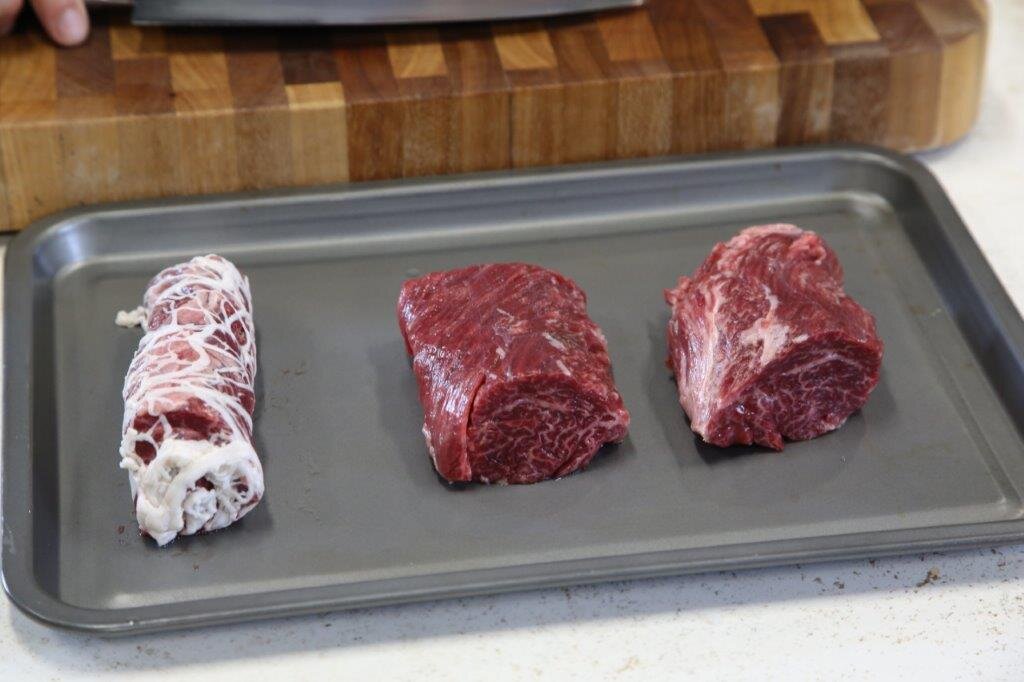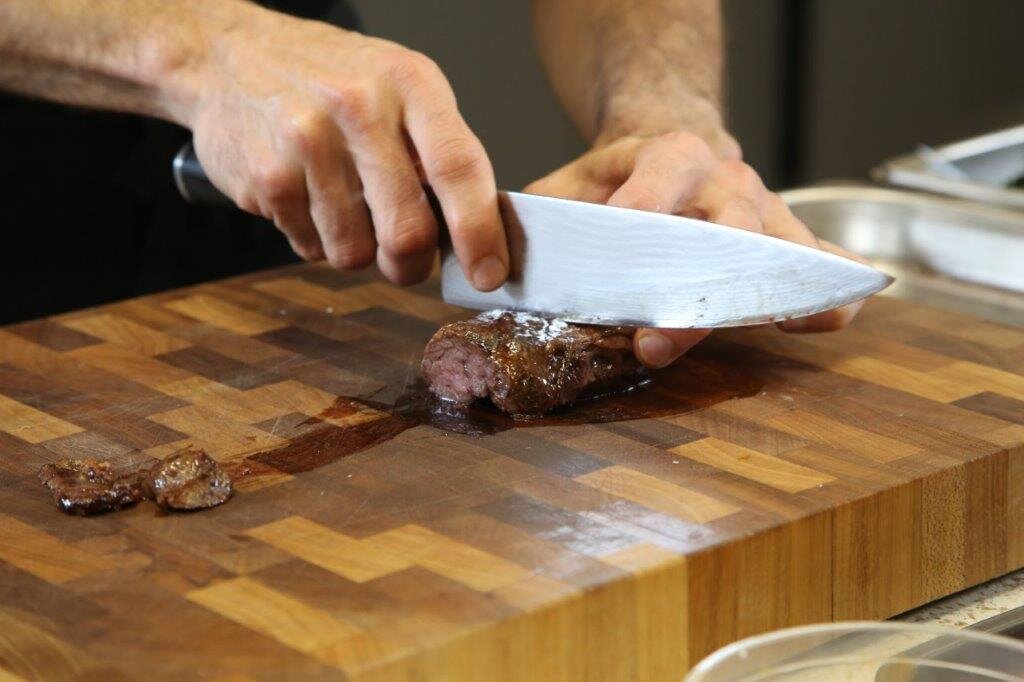HANGER STEAK ON THE MENU
Hanger steak hangs, (hence its name) between the rib and the loin, where it supports the diaphragm of the animal. It was originally known as a “butchers steak” as butchers kept it for their own families knowing it was one of the most flavoursome and tender cuts of beef, and as such, was little known by consumers.
It may not be so common on supermarket shelves but you will find hanger steak popping up on restaurant menus across New Zealand, as chefs love its intense flavour and loose texture. Being a secondary-cut it is excellent for keeping menu costs in check, and gives diners the opportunity to try something a little different when it comes to steak on the menu.
Beef + Lamb Ambassador Chef, Jack Crosti of Number 5 Restaurant in Auckland is a fan of using this cut on his menu. He says because the hanger sits near the kidneys it takes on a slightly offal flavour which gives hanger steak that delicious rich flavour. Not only that but Jack takes his hanger to another level by wrapping it in caul fat prior to cooking. The caul fat melts into the meat when cooked over a traditional charcoal flame, making it superbly moist and tender.
Hanger steak is fairly thin so cooking to medium rare is essential to ensure tenderness. He uses coffee charcoal to add a little smokiness into the flavour profile.
Jack says starting with a top-quality piece of meat is the best way to create a successful dish. He is a huge fan of Waitaha Farms Wagyu and says their hanger steak has excellent marbling which enhances flavour and tenderness. Waitaha is Maori for Canterbury and Jack says giving his Auckland customers a little taste of Canterbury and being able to tell customers the paddock to plate story is an important part of being a chef.
Jack’s finished dish is a show stopper and a real taste sensation. He serves it with a deeply caramelized carrot purée and a dash of Chardonnay Verjus which cuts down a bit of the sweetness with its acidity. The carrots are baked whole covered in coffee beans, and served sliced into rounds. Their flavour provides a subtle bitterness which works harmoniously with the rest of the dish components. Jack finishes the dish with some square carrot sheets dressed with extra virgin olive oil, leek ash, crispy cavolo nero and a drizzle of beef jus that has been slowly cooked for three days.
Jack takes us through his preparation and cooking steps for his hanger steak below:
Salting – coating the meat in flaky sea salt is a great way to fast cure or dry age the steak. This takes the moisture off the outside of the meat and helps to concentrate more flavour and seasoning into the meat. With a dryer outer the meat caramelises beautifully when cooked, forming a delicious crust. Depending on how thick the steak is you can leave the meat salted for anywhere between a half to two hours.
Remove the salt from the steak by washing it off in an ice water bath. This is to ensure top health and safety practice by keeping the meat cool.
Roll and wrap – Shape the hanger steaks into long cylinder shapes and slice into portions. Wrap each portion with caul fat and store in the fridge for a couple of hours to ensure the steak keeps its shape and the caul fat sticks well to the meat.
Cook – Bring the portioned and wrapped steaks to room temperature and cook over a charcoal grill to medium rare. Rest and serve.
If you are keen to showcase hanger steak on your menu and have any questions, you can get in touch here.






